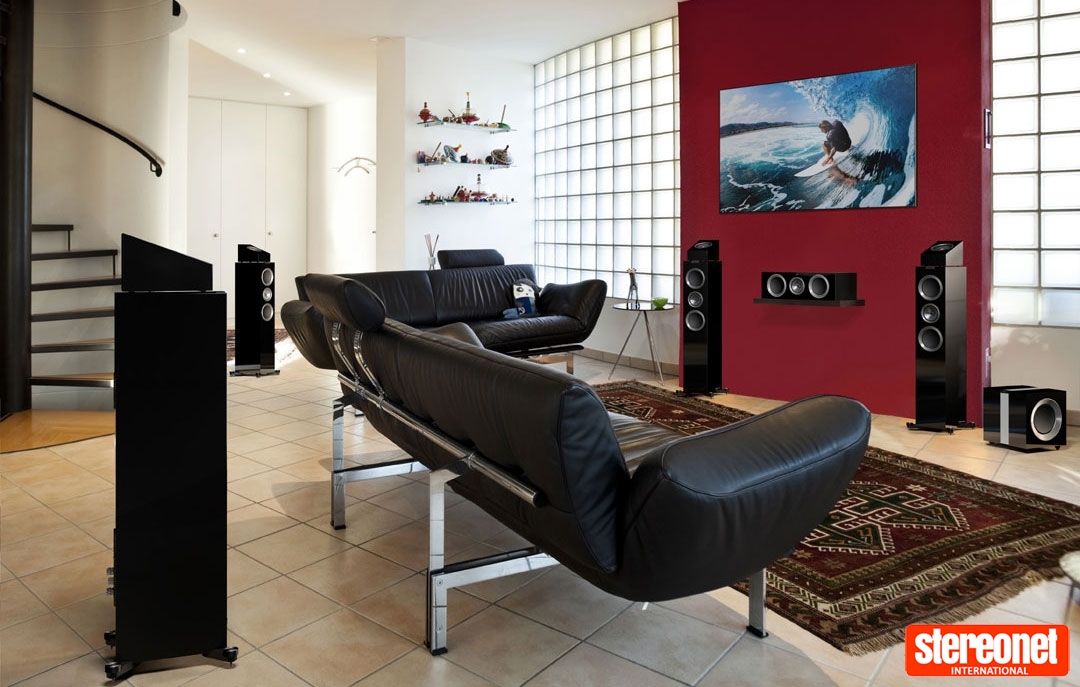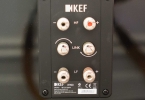REVIEW: KEF R900 FLOORSTANDING LOUDSPEAKERS

In recent years, KEF has extensively widened their scope, producing products such as headphones, TV sound bars, architectural speakers, and surround sound systems. Despite this, the true heart of KEF is in their Hi-Fi range and we take a look at their R900 floorstanding speakers.
Prefer the StereoNET Digital Magazine, click below. Otherwise, read on.
KEF
R900
Floor Standing Speakers
Brilliant innovation comes from brilliant people. Raymond Cooke was certainly one of these people. Raymond was a Royal Navy WWII veteran, who upon returning from the war worked as part of the famous BBC design engineering team.
He was later appointed as technical director at Wharfedale – and in 1961, created his very own speaker company, right in the heart of Maidstone, Kent – named KEF.
KEF stands for Kent Engineering & Foundry – the name of the agricultural and industrial equipment manufacturing company who owned the land on which Raymond began his own loudspeaker production company. The name (KEF), as well as the original location, both remain – and are integral to the loudspeaker company we know today.
The very first loudspeaker to come out of KEF was named the K1 Slimline – unusual due to the loudspeaker drivers being made from Polystyrene and Melinex.
Not long after this was the “Celeste” – famous for not only being one of the first ever high performance compact loudspeaker, but also for its unusual vertically mounted oval-shaped subwoofer. It was later revealed that the reason for this unusual driver was not actually for auditory reasons, but rather for tax purposes. Back in 1962, “professional” speakers were not taxed – and to be considered a professional speaker, it must either be a 3-way design, or have a subwoofer of 8 inches or larger (which cleverly, the Celeste did).
Not only using their smarts for financial gain, KEF have also pioneered several production fundamentals that are now firm “rules” in the loudspeaker cabinet making industry – such as driver decoupling, coupled-cavity bass loading, and of course using computers for testing and designing speakers.

It is this clever use of technology that has allowed KEF to flourish so strongly over the years and to become somewhat of a household name in the audio industry.
In recent years, KEF has extensively widened their scope, producing products such as headphones, TV sound bars, architectural speakers, and surround sound systems. Despite this, the true heart of KEF is in their Hi-Fi range.
KEF have several Hi-Fi offerings, grouped by “series”. Starting with the cost effective C series, ranging all the way up to the flagship Blade and bizarre looking MUON.
Johan Coorg, brand ambassador for KEF, describes the R series as the “junior reference”, but with the DNA from the flagship “Blade” model. The R900 floorstanders we have our hands on are the flagship from this series.
So, for the asking price, how does the KEF R900 stack up?

Build
Each unit is a hefty 29.5kg, and measures 1130 x 240 x 365 mm. They are made of solid MDF, and come in either real walnut or rosewood veneers, or highly polished piano black.
The aesthetic is safe, trusty and clean. The designers have chosen to go with a classic look instead of anything more experimental (such as the smooth curves of the Blade flagship). There are no visible screws or fixings whatsoever, no matter which angle they are viewed from.
KEF refers to this design as “timeless”, and I agree. Speaker cabinet designs that go for a less bold approach can often stand the test of time very well.
Our model came in highly-polished piano black. The finish and build quality are superb. It’s a fantastic and impressive looking piece of furniture to have in the home. At the same time, it’s also a magnet for fingerprints and dust.
Each R900 comes with adjustable die-cast aluminium ‘outriggers’, with locking knobs. They are simple to adjust, and come with instructions (eerily reminiscent of the IKEA furniture ones), making installation very simple. All tools required for installation come with the accessories pack, minus a phillips head screwdriver.

Drivers
Each R900 cabinet contains:
- 2 x 200mm bass drivers (LF)
- 1 x 125m midrange driver (MF)
- 1 x 25mm high driver (HF)
Upon initial inspection, one would be forgiven for mistaking these as 2-way speakers. The R900 is actually a 3-way design.
Using their now famous Uni-Q driver array which handles the midrange and high frequencies from one coaxial driver, KEF have solved the pitfalls of the popular coaxial arrangements of yesteryear in several ways.

Before the Uni-Q, the extremely narrow throw of a traditional coaxial speaker was not an easy problem to fix. In the ‘sweet spot’ listening position, that wasn’t too much of an issue. However, if the listener starts moving around, phasing and directivity issues started coming into play, and the sound was not as consistent when listening off-axis.
KEF claim that:
Because it is mounted at the centre of the MF unit, the HF unit’s directivity is also governed by the angle of the MF unit’s cone – the HF directivity is the same as the MF directivity. This means that as the listener moves away from the main axis, the output of both the HF and the MF reduce at about the same rate, increasing the tonal balance and the stereo imaging throughout the listening area.
The Uni-Q has come a long way since its inception in 1988. The array used in the R900 has a new “mid-range Z-flex surround”, which strives to eliminate the secondary radiation (or “diffraction”) caused by the older “half-roll” design of the older surround.

Inside the box
Despite the subtle and clean look of the R900 cabinet, the inside tells a completely different story.
KEF was reportedly the first company to use computers in designing loudspeaker drivers. It’s no surprise then that the 3-way crossovers and drivers were designed digitally. As well as this, the cabinets themselves were designed with the Finite Element Method (or Finite Element Analysis, FEA for short).

There are separate ports for each of the LF drivers – two each (four in total). These can be independently plugged if the situation requires, depending on the room the R900s will play in.
The R900 can be run in either single or bi-wire configurations. KEF have made the change incredibly easy – simply turning the terminal link switch will connect the channels together. No need for any fiddly metal links here, and no parts to go missing.

Sound & listening
Testing with a range of amplifiers including a Rotel RA-971 MK.II, and a trusty vintage Yamaha RX900 and with their wide rated power recommendation of 25 to 250 watts, I didn’t find these to be particularly fussy with amplification – but will scale incredibly well depending on the source chosen.
Despite being a mid-size floor standing speaker, the driver height and positioning gives a colossal presentation.
Dual 200mm LF drivers deliver strong, raw, linear bass performance – and through the entire low range (both subbass and midbass) there are no key areas that blind the listener. There are no bloated notes, or awkward resonant spikes in the lower register. Bass comes across as neutral, which is no easy engineering feat, especially with a box this size.
Having said that, when called upon, the bass can be absolutely thunderous. With the right amplification and source track, the result can be staggering. Even when faced with a torrent of lows, the R900 still doesn’t start spiking, peaking or producing wonky awkward notes.

Mids, and especially vocals, are pushed ever so slightly forward in the presentation. Highs are very well extended, but don’t push too far forward into the mix to be overbearing. They assist with excellent detail reproduction, and are well controlled. With the right placement, the imaging these boxes can produce is superb. They will reveal the flaws in recordings, and will reproduce artefacts in lesser digital files – low bitrate MP3s, beware.
The Uni-Q array throws both mids and highs incredibly wide, with pinpoint reproduction accuracy. Having a point source dual HF/MF hybrid driver array really bring outs the realism in recordings.
Unlike many loudspeakers, I actually found the R900 to not be overly fussy with speaker positioning.
Crossover points are at 400hz, and 2.9kHz. Using both test tracks and sweeping tone generators, these crossover points could not be audibly detected.
As for output, I never felt the need to push the R900s beyond their limits. However, when pushed, the drivers did not skip a beat nor show signs of distortion. The bass output scales well as the volume increases.

Conclusion
The KEF R900 loudspeakers are not only a classy piece of furniture for the house, they’re an engineering masterpiece. With a smooth and accurate low end, scarily realistic midrange and well extended, yet inoffensive highs, the sound is exactly what one would imagine a reference KEF product at this price-point may produce.
Those who do not have ideal listening conditions or rooms - fear not. The KEF R900 is not a fussy, directional monster.
They are fingerprint and dust magnets, so please be aware of this if you intend to place them anywhere within reach of little hands or paws.
I thoroughly enjoyed spending time with KEF’s R900, and suggest you put them on your audition shortlist for a reference level HiFi speaker under $10,000.
For more information visit the KEF brand page.
Matthew Jens
Constantly keeping himself busy, Matthew is a production manager, Brazilian jiu-jitsu blue belt, Head-Fi fanatic, coffee enthusiast and all-round cool Dad.
Posted in:Hi-Fi
Tags: kef advance audio
JOIN IN THE DISCUSSION
Want to share your opinion or get advice from other enthusiasts? Then head into the Message Forums where thousands of other enthusiasts are communicating on a daily basis.
CLICK HERE FOR FREE MEMBERSHIP
Trending
applause awards
Each time StereoNET reviews a product, it is considered for an Applause Award. Winning one marks it out as a design of great quality and distinction – a special product in its class, on the grounds of either performance, value for money, or usually both.
Applause Awards are personally issued by StereoNET’s global Editor-in-Chief, David Price – who has over three decades of experience reviewing hi-fi products at the highest level – after consulting with our senior editorial team. They are not automatically given with all reviews, nor can manufacturers purchase them.
The StereoNET editorial team includes some of the world’s most experienced and respected hi-fi journalists with a vast wealth of knowledge. Some have edited popular English language hi-fi magazines, and others have been senior contributors to famous audio journals stretching back to the late 1970s. And we also employ professional IT and home theatre specialists who work at the cutting edge of today’s technology.
We believe that no other online hi-fi and home cinema resource offers such expert knowledge, so when StereoNET gives an Applause Award, it is a trustworthy hallmark of quality. Receiving such an award is the prerequisite to becoming eligible for our annual Product of the Year awards, awarded only to the finest designs in their respective categories. Buyers of hi-fi, home cinema, and headphones can be sure that a StereoNET Applause Award winner is worthy of your most serious attention.





















